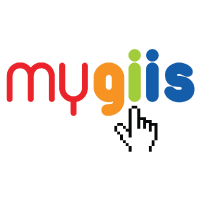Language acquisition has long been recognized as a crucial aspect of human development, serving as the foundation for effective communication and cognitive growth. Traditionally, language acquisition in students has heavily relied on face-to-face interactions with teachers, language exchange with peers, and exposure to authentic language contexts. While these conventional methods have proven effective over the years, the advent of artificial intelligence (AI) technologies has revolutionized the educational landscape, including language acquisition. AI has introduced new opportunities and challenges by augmenting traditional language learning methods with innovative tools and approaches. The integration of AI into language acquisition has the potential to enhance the efficiency, personalization, and accessibility of language learning for students of all ages and backgrounds.
The use of AI in language acquisition has opened up exciting possibilities for students, offering personalized and adaptive learning experiences. AI-powered language learning platforms can analyze individual students’ strengths and weaknesses, tailoring content and exercises to suit their specific needs and learning styles. Moreover, AI-driven chatbots and language tutors can provide continuous support and immediate feedback to high school students, promoting autonomous learning and boosting their confidence in using the target language. These virtual language mentors can simulate real-life conversations and immerse students in authentic language contexts, leading to more practical and effective language acquisition. However, as AI continues to shape language learning, it is essential to consider potential challenges, such as ensuring data privacy, maintaining the balance between human interaction and AI assistance, and addressing potential biases in AI algorithms that could impact language acquisition in students. By critically examining the impact of AI on language acquisition, educators and policymakers can harness the full potential of these technologies to optimize language learning outcomes and equip students with essential linguistic skills for success in an increasingly globalized world.
What is language acquisition?
Language acquisition refers to the process through which individuals, typically children, learn and develop their ability to understand and use language. It is a remarkable and complex phenomenon that occurs naturally in humans without formal instruction. During the early stages of language acquisition, infants start to perceive and process the sounds of their native language. As they grow, they gradually acquire vocabulary, grammar, and syntax through exposure to spoken language in their environment. This process involves various cognitive, social, and physiological factors. Children actively engage in linguistic interactions with caregivers and others around them, imitating speech sounds and patterns to build their linguistic skills. Over time, language acquisition allows individuals to express their thoughts, emotions, and ideas effectively, fostering social communication and cognitive development.
Language acquisition occurs in stages, and researchers have identified key milestones in this process. In the pre-linguistic stage, infants vocalize and babble, experimenting with sounds and intonations. The one-word or holophrastic stage follows, during which children use single words to convey entire thoughts or requests. As they progress, they enter the two-word stage, combining words to form basic phrases and simple sentences. Throughout these stages, children display an innate ability to decipher the complex rules and structures of their native language without explicit instruction. This incredible capacity for language acquisition showcases the unique cognitive abilities of humans and highlights the importance of early language exposure and social interaction in facilitating linguistic development.
What is the impact of AI on language acquisition in students?
AI technology has the potential to greatly impact language acquisition in students. Here are seven points explaining this impact:
1. Enhanced personalized learning: AI-powered language learning platforms can adapt to student’s individual needs, providing personalized recommendations and content based on their proficiency level, learning style, and interests. This personalized approach can significantly enhance language acquisition by targeting specific areas of improvement.
2. Real-time feedback and assessment: AI-based language learning tools can provide instant feedback on pronunciation, grammar, and vocabulary usage. This immediate feedback allows students to correct their mistakes promptly, reinforcing correct language patterns and accelerating the learning process.
3. Access to authentic language resources: AI can help students access a vast range of authentic language resources such as articles, videos, podcasts, and interactive exercises. These resources expose students to real-life language usage, improving their comprehension skills and exposing them to different accents, dialects, and cultural nuances.
4. Interactive conversational practice: AI chatbots and virtual language tutors can engage students in interactive conversations, providing them with opportunities to practice their language skills in a safe and non-judgmental environment. Through these interactions, students can enhance their speaking and listening abilities, build confidence, and develop their fluency.
5. Natural language processing: AI-powered language acquisition tools utilize natural language processing (NLP) algorithms to analyze and understand students’ written or spoken language. This technology enables the identification of errors, patterns, and areas for improvement, allowing students to receive targeted language instruction and support.
6. Gamification and motivation: AI-based language learning platforms often incorporate gamification elements such as challenges, rewards, leaderboards, and progress tracking. These gamified features not only make language learning more enjoyable but also foster motivation and engagement among students, encouraging them to practice regularly and persist in their language acquisition journey.
6. Accessibility and inclusivity: AI can help bridge language barriers and make language learning more accessible to students from diverse linguistic backgrounds. With AI-powered translation tools such as Google translate, students enrolling for CBSE school admission can quickly translate texts, conversations, or even entire documents, facilitating their understanding and participation in language acquisition programs.
The challenges of artificial intelligence on language acquisition
Artificial intelligence (AI) has made significant advancements in various fields, including natural language processing and language acquisition. Language acquisition refers to the process of learning and understanding language, and AI systems aim to replicate this process. However, there are several challenges that AI faces in this area:
1. Ambiguity: Language is inherently ambiguous, and understanding the intended meaning of a sentence can be challenging even for humans. AI systems struggle with multiple interpretations of words, phrases, and sentences, leading to inaccurate understanding and responses.
2. Contextual understanding: Language often relies on context for proper interpretation. AI models face difficulties in understanding contextual cues, such as sarcasm, idioms, or cultural references. This can result in misinterpretation or inappropriate responses.
3. Lack of rational knowledge: AI models lack the extensive background knowledge that humans possess. Understanding language requires knowledge of the world, including basic facts, common experiences, and cultural norms. Without this knowledge, AI systems may misinterpret or fail to understand certain language constructs.
4. Data bias and representation: AI language models learn from large datasets, which can be biased or unrepresentative of diverse perspectives. This can lead to biased language generation or reinforcement of existing stereotypes. Efforts are being made to address this issue by improving data collection and model training processes.
5. Adapting to new languages and dialects: Language is dynamic, with new words, dialects, and linguistic variations emerging regularly. AI models often struggle to adapt to these changes, requiring continuous updates and training to keep up with evolving languages.
6. Lack of common-sense reasoning: While AI language models can generate coherent and grammatically correct sentences, they often lack the ability to reason and make logical inferences. This limits their understanding and ability to engage in complex conversations.
7. Privacy and ethical concerns: AI language models often rely on large amounts of personal data to improve their performance. This raises concerns about privacy, data security, and the ethical implications of using personal information for language acquisition.
How AI helps with language learning?
AI can significantly enhance language learning by providing personalized and adaptive learning experiences to students. AI-powered language learning platforms can assess a learner’s proficiency level through tests, speech recognition, and language exercises. Based on this analysis, the AI can create customized lesson plans and content, targeting the learner’s specific strengths and weaknesses. By receiving tailored materials, learners can improve their language skills at their own pace, ensuring a more efficient and engaging learning process.
Additionally, AI can offer real-time feedback and correction, helping learners to improve their pronunciation, grammar, and vocabulary usage. Chatbots and virtual language tutors, powered by AI, allow learners to practice conversations and receive immediate responses, simulating real-life language interactions. This interactive approach fosters confidence and fluency, making language learning more enjoyable and effective. Overall, AI’s adaptability and interactivity revolutionize language learning, making it more accessible and efficient for learners worldwide.
Conclusion
In conclusion, the impact of Artificial intelligence in education and on language acquisition in students is undeniably transformative, ushering in a new era of personalized and efficient learning. By leveraging AI-powered tools, students are afforded tailored language learning experiences that cater to their individual needs, pace, and preferences. These tools, ranging from interactive language apps to AI-driven tutors, facilitate engaging and immersive learning environments, ultimately enhancing students’ linguistic skills and boosting their confidence in using the target language. However, it’s essential to strike a balance between AI and human interaction in language acquisition, as the nuanced aspects of communication, cultural context, and emotional connection are best nurtured through genuine human interactions. Moreover, while AI accelerates the learning process, educators and policymakers must ensure equitable access to these technologies to avoid exacerbating educational disparities.
In the coming years, as AI technology continues to advance, its role in language acquisition in schools will likely evolve further. AI could play an instrumental role in breaking down language barriers, promoting cross-cultural understanding, and fostering global communication. Nevertheless, the ethical considerations surrounding data privacy, algorithmic bias, and the potential for over-reliance on AI in education must be carefully addressed to harness the full potential of AI while safeguarding the holistic development of students. As we navigate this dynamic landscape, a collaborative approach that combines the strengths of AI with the depth of human interaction will pave the way for a more comprehensive and effective language acquisition journey for students around the world.
FAQs
What are the benefits of artificial intelligence in education?
Artificial Intelligence (AI) has the potential to revolutionize education in various ways, offering several benefits:
1. Personalized Learning: AI can adapt to individual student’s learning styles and paces, providing tailored learning experiences. It analyzes student data to identify strengths, weaknesses, and preferences, enabling educators to deliver customized content and interventions.
2. Efficient Administrative Tasks: AI can handle administrative tasks like grading, attendance tracking, and scheduling, freeing up educators’ time for more impactful teaching activities.
3. 24/7 Accessibility: AI-powered educational tools can be accessed anytime, anywhere, allowing students to learn at their own pace and convenience.
4. Data-Driven Insights: AI can analyze vast amounts of data to identify trends and patterns, helping educators make informed decisions about curriculum design, teaching strategies, and student support.
5. Enhanced Engagement: AI can incorporate interactive elements like simulations, virtual reality, and gamification to make learning more engaging and immersive.
6. Language Translation: AI-powered language translation tools can break down language barriers, enabling students to access educational content in their native languages.
7. Early Intervention: AI algorithms can detect early signs of learning difficulties or behavioral issues, enabling timely interventions and support.
8. Lifelong Learning: AI can facilitate continuous learning and upskilling throughout one’s life, ensuring that education remains relevant in rapidly evolving fields.
What are examples of artificial intelligence in education?
Here are some good examples of the use of artificial intelligence in education:
1. Adaptive Learning Platforms: Platforms like DreamBox and Knewton use AI algorithms to adjust the difficulty and pace of learning materials based on individual student performance.
2. Intelligent Tutoring Systems: Systems like Carnegie Learning and ScribeSense provide personalized tutoring, answering students’ questions and guiding them through complex concepts.
3. Automated Essay Graders: Tools like Turnitin and Grammarly use AI to assess and provide feedback on student essays, saving teachers time and providing consistent evaluations.
4. Language Learning Apps: Apps like Duolingo and Babbel use AI to personalize language learning paths and provide real-time feedback on pronunciation and grammar.
5. Virtual Reality in Education: VR platforms like Google Expeditions offer immersive educational experiences, enabling students to explore historical sites, scientific phenomena, and more.
Can AI replace teachers?
While AI can greatly enhance education, it’s unlikely to completely replace teachers. The human element of teaching involves empathy, mentorship, emotional support, and creative problem-solving, which AI currently cannot replicate. AI can assist teachers by automating certain tasks, providing insights, and delivering personalized content, but the role of a teacher extends far beyond what AI can achieve.
What is the importance of AI in language acquisition in Bangalore schools?
The role of AI in language acquisition within Bangalore schools is of utmost importance due to several compelling reasons:
1. Diverse Language Landscape: Bangalore boasts a multicultural environment where people speak numerous languages. AI-driven translation tools can bridge communication gaps and enhance accessibility to education for all students.
2. Personalized Language Learning: AI can revolutionize language learning experiences by tailoring them to individual students’ proficiency levels and unique learning styles. This personalized approach accelerates language acquisition and fosters more effective learning outcomes.
3. Real-Time Practice: Language learning apps powered by AI can offer students the opportunity for real-time practice and feedback. This dynamic interaction allows for significant improvement in speaking, listening, reading, and writing skills.
4. Cultural Context: AI can provide valuable insights into the cultural nuances of different languages such as Kannada and Hindi . By understanding context and usage, students can develop a deeper appreciation and mastery of the languages they study.
5. Teacher Support: AI can serve as a valuable assistant to language teachers. By analyzing students’ language patterns, AI can identify specific challenges and suggest targeted exercises or interventions, leading to more effective teaching methodologies.
6. Parental Involvement: AI-powered platforms can actively engage parents in their children’s language learning journey. By providing progress updates and suggesting activities for practice at home, parents can actively participate in supporting their children’s language acquisition process.


 Bannerghatta Campus
Bannerghatta Campus





































